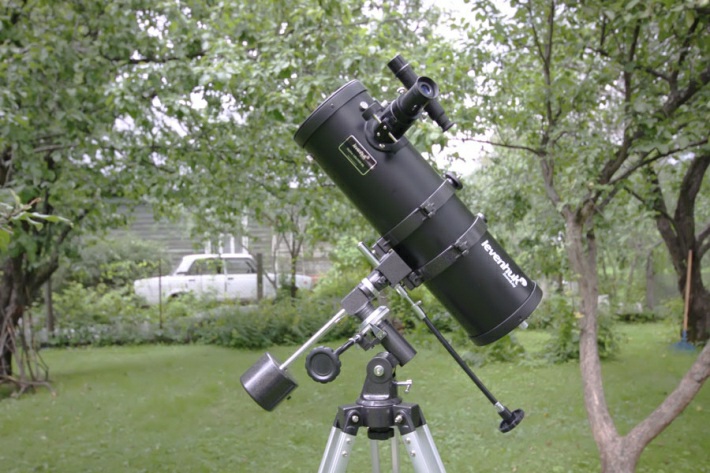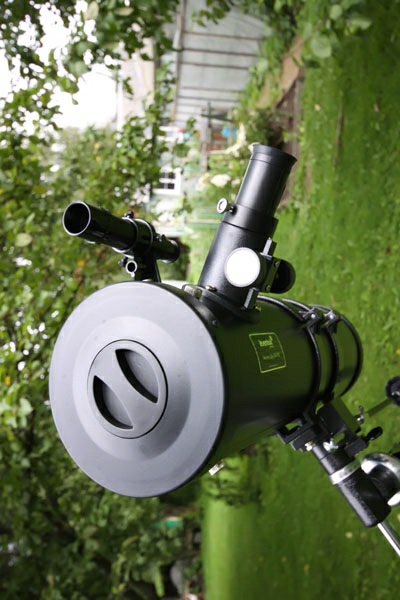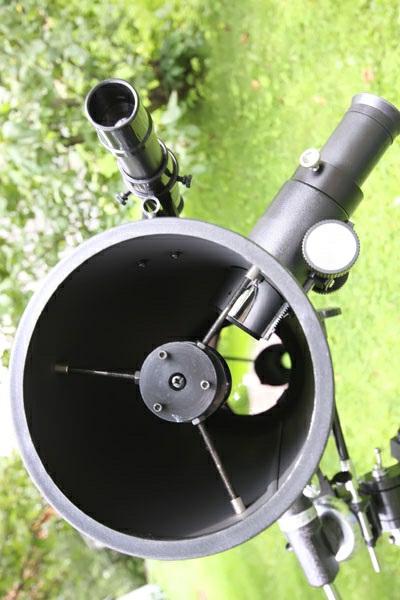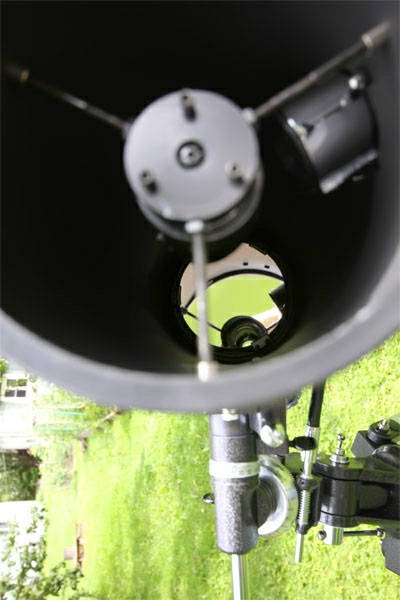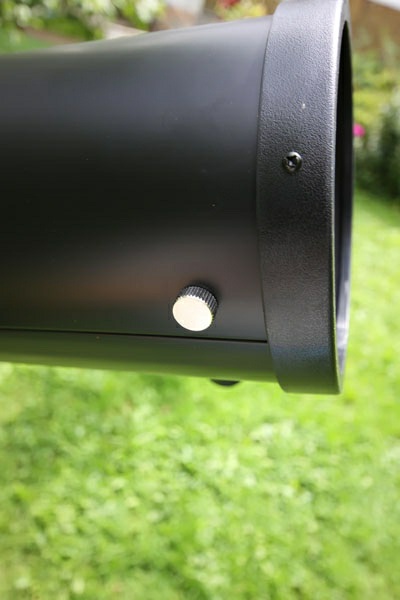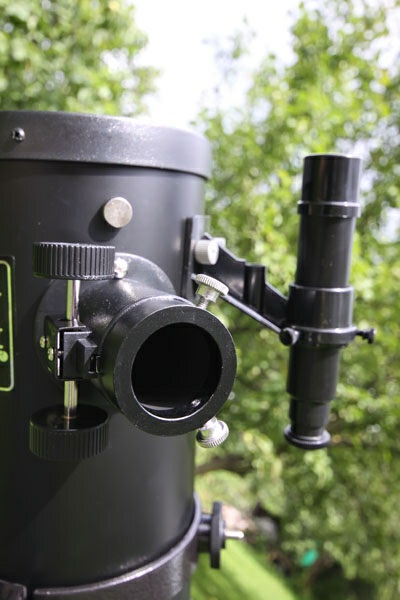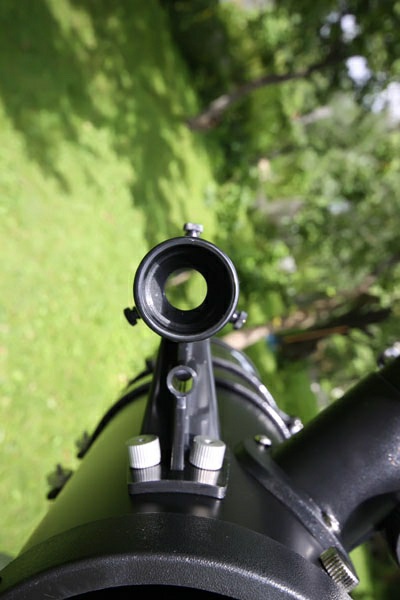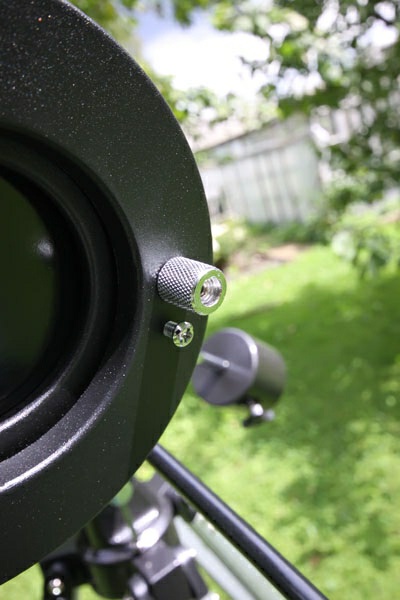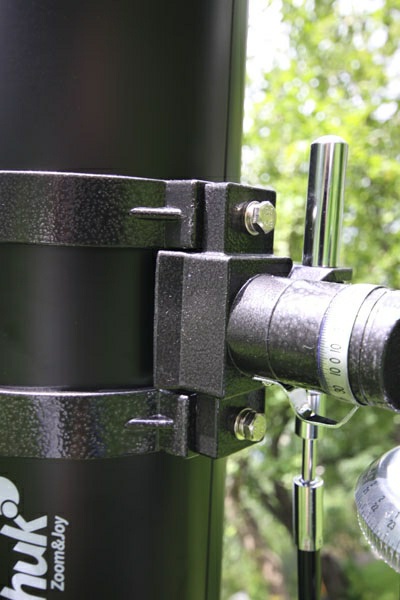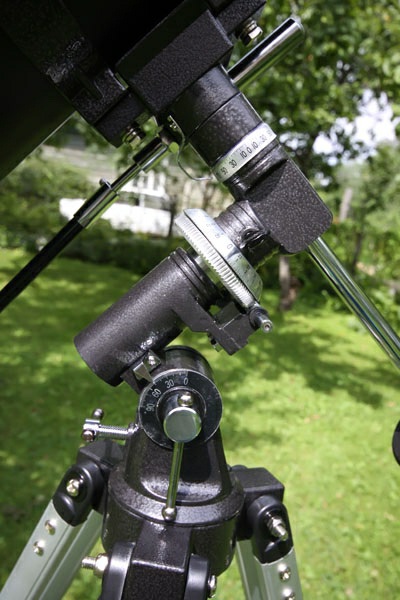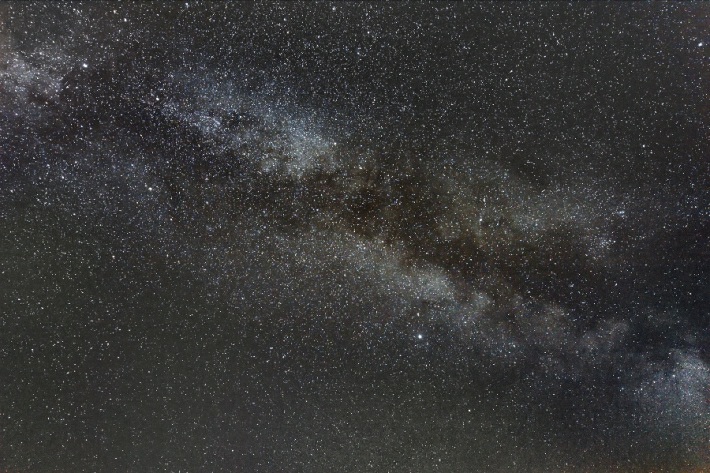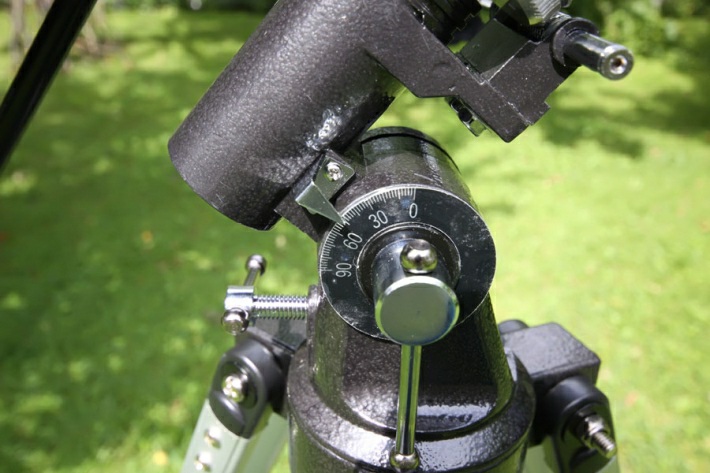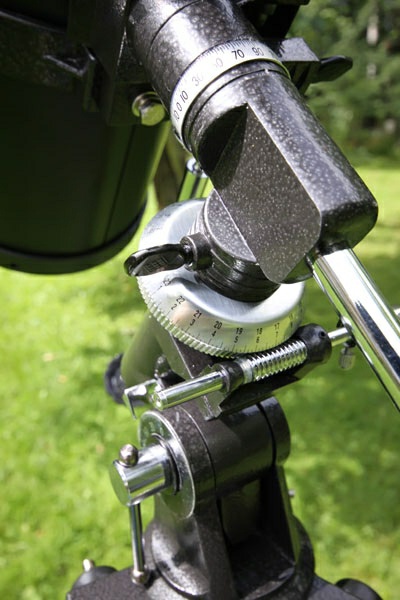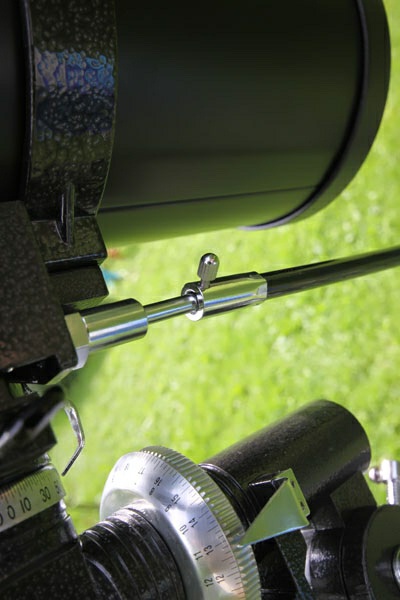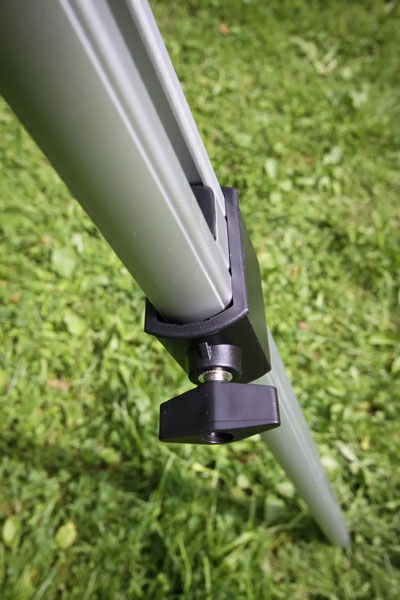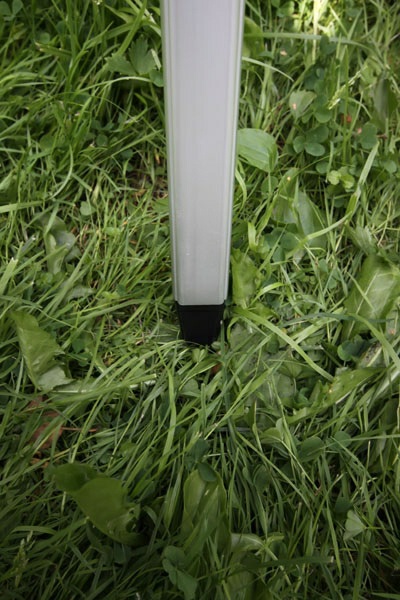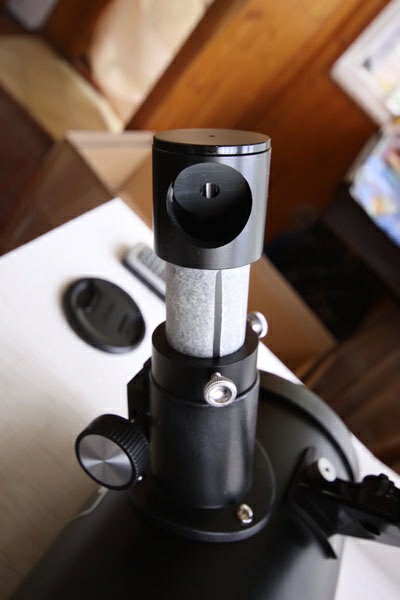Recensione del telescopio Levenhuk Skyline 120x1000 EQ
Levenhuk Skyline 120x1000 EQ is a lightweight and portable Newtonian reflector. It is designed for visual observations of bright celestial objects, such as the Sun, Moon, Solar System planets, bright nebulae, galaxies, scattered stars, globular star clusters, as well as a huge number of stars in our galaxy. The small size of the package (32.3x15.4x9.8 in or 82.0x39.0x25.0 cm) allows for easy transportation of the instrument by car or public transport.
One of the main advantages of this instrument is portability – you can put this telescope together with the mount into your backpack or case and transport it to the observing spot by hand. Levenhuk Skyline 120x1000 EQ telescope can be set on your balcony, backyard, or in any other place suitable for observations. The telescope is very easy to assemble and use – even a school child can handle this task with ease. This instrument is ideally suited for learning the basics of astronomy. It is great for people of all ages, whether it’s a kid or a retiree. I recommend that you assemble the telescope in this order: tripod, mount, optical tube. After finishing your observations, close the tube with the protective cap and wait until the tube is completely dry and dew-free. Then put the instrument in a case or box for storage.
The overall view of fully assembled Levenhuk Skyline 120x1000 EQ Telescope:
The ergonomics and design are great. The focuser and finderscope are located so they do not interfere with each other. The cap protects the optics from dust and dirt. You will, however, need to wash the mirror with cold water once in a while, or just wipe it off with a cotton swab dipped in acetone.
The cap also has a small hole in the center needed for viewing the Sun through a special aperture solar filter. It also ventilates the tube, saving it from dirt and dust that may fall from the trees. Prior to your observations, put the tube in a horizontal position, open the hole or completely remove the cap, and leave it outside the house for thermal stabilization.
The sturdy metal rods of the spider inside the tube hold the secondary mirror in place. The secondary mirror cell is equipped with three screws for orientation and one central locking screw. These screws are used for the collimation of the telescope's optical system.
The images below show how the rack-and-pinion focuser and the finderscope are attached to the tube.
The optical tube is blackened internally to avoid scattered light and, therefore, get even more quality images. The primary mirror is attached to the rim at the end of the tube. This connection has three rubber pads, located at 120 degrees to each other and fastened with screws to the frame. If they are overtightened, you can notice the oval shape of the inside and outside focus star images. In that case you should loosen them a little in order to allow the mirror a certain degree of freedom. The inside and outside focus star images made with this telescope will be shown later in the final part of the review.
The eyepiece node consists of the composite tube of ‘plastic-foil’ type and the rack attached to it. All these components are placed in the metal body. The Levenhuk Skyline 120x1000 EQ telescope allows you to use various eyepieces and other accessories with 1.25’’ barrel diameter.
The focuser backlash can be regulated with two screws at its base. The focuser knobs are large and very convenient. The images below show the spider fastening screw and the focuser.
The eyepiece adapter has no brass ring inside, and eyepieces are fixed with two screws. It isn't a big deal, but if you aren't careful you can scratch your accessories with the clamping screws.
When you look through the eyepiece node, you can see the whole inner construction of the optical tube.
With the telescope you also get two eyepieces with a field of view of 52 degrees. These eyepieces have 10mm and 25mm focal lengths and give 50x and 20x magnification, respectively. The optics are made of quality multi-coated glass.
The 5x optical finderscope that also comes in the package allows you to quickly point the telescope to the desired area of the sky.
The finderscope is made of plastic. It is attached to the tube with two large screws. For accurate alignment of the finderscope, point the telescope at some distant object (about 500 meters away from you), and then align the images provided by the main telescope and the finderscope together, using the adjustment screws on the body.
The images below show the telescope’s main fixing screws and the overall view of the assembled tube.
The ring clamps that hold the optical tube shouldn’t be overtightened – choose just the right amount of force to fix it so it doesn’t move in the rings. Each ring clap has a threaded hole for installing additional equipment.
There’s a special plastic protection on the back of the primary mirror. The telescope’s alignment is done with three collimation screws.
The tube is fixed to the mount with a pair of screws. All the necessary wrenches and other assembling instruments are included in the package.
The lightweight and portable EQ-1 mount can be equipped with an electric motor drive (purchased separately) for easy navigation and monitoring. The mount is not only suitable for visual observations, but also for shooting the Moon at prime focus (if you have a special astrophotography telescope camera).
If you buy the RA axis motor drive and set the camera directly onto the mount, you can get beautiful pictures of star fields and night landscapes.
The mount has a scale with a pointer for easier polar alignment. The latitude adjustment bolts have a reverse movement for more convenience.
The mount has lock knobs on both axes. To quickly find objects to observe, use axis scales and a low magnification eyepiece.
Both scales are also equipped with pointers. For more convenience, use slow-motion controls. Don’t forget to balance the telescope before observations.
Carefully lock the counterweight with the screw so it won't accidentally fall on your foot. The lightweight aluminum tripod has a very convenient accessory tray.
The tripod height can be adjusted to the observer's height.
Make sure that you firmly tighten the screw that fixes the mount and the tripod together. During terrestrial observations use small magnifications.
Telescope alignment
Before observing you'll need to make sure that your telescope is properly aligned. To do so you will need a so-called "Cheshire Eyepiece". You should check the alignment regularly, and fix it when needed. We also recommend wrapping the Cheshire Eyepiece with adhesive tape for better connection to the eyepiece tube.
Pay special attention to the concentricity of all circles around the center (mark on the mirror) using all adjustment screws that move the optics inside the tube.
After the alignment is done, you can start testing the instrument. Take an eyepiece with high magnification power and point the telescope on a star. You should see a star itself and the diffraction disk around it. If you can see that, the telescope is aligned and ready for use. The image below shows us the testing results of the Levenhuk Skyline 120x1000 EQ Telescope.
After visual and astrophotography tests I can conclude that the telescope has a very good quality of produced images.
| Specifications | |
| Optical design | Newtonian reflector |
| Optics coating | fully multi-coated |
| Primary mirror diameter (aperture), mm | 114 |
| Focal length, mm | 1000 |
| Highest practical power, x | 230 |
| Focal ratio | f/8.8 |
| Resolution threshold, arcseconds | 1.2 |
| Limiting stellar magnitude | 12.2 |
| Eyepieces | SUPER 10, SUPER 25 |
| Eyepiece barrel diameter | 1.25" |
| Barlow lens | 2x |
| Finderscope | optical, 5x24 |
| Focuser | rack-and-pinion, 1.25" |
| Tripod | aluminum |
| Tripod height (adjustable), in | 28-48.4 |
| Mount | EQ1 (German equatorial) |
| Optical tube weight, lbs | 7.9 |
|
|
|
Visual observations
Levenhuk Skyline 120x1000 EQ Telescope is a perfect choice for any beginning amateur astronomer. It is a wonderful gift for a kid. This telescope will show you and your children the mysterious wonders of the night sky; and introduce you to many interesting celestial objects that can’t be seen with the naked eye.
Screening by the secondary mirror is quite large (about 30%) in this model. Therefore, the instrument is great for observing planetary disks, but small details will be lost. The telescope is recommended for use with 1.25’’ eyepieces. Put the telescope outside for half an hour before you use it (for thermal stabilization). Align the finderscope on a distant object. List the celestial objects you want to observe in advance. When preparing the list, don’t forget that the telescope can’t resolve binaries less than 1.2''. I would also recommend reading "See it all!" Astronomer's Handbook (sold separately) before planning you observations. This book describes all celestial objects you can observe with Levenhuk Skyline 120x1000 EQ Telescope. You can choose objects according to the season, time, and location.
After you finish your observations and remove the optical tube, don’t forget about the counterweight. It shouldn't be left on the mount.
The telescope creates sharp and vivid images of terrestrial objects. Free of chromatic aberrations, this telescope ensures accurate color rendition of produced images.
Summary
Levenhuk Skyline 120x1000 EQ is a quality Newtonian reflecting telescope. The telescope creates bright, vivid images of produced celestial objects and doesn’t suffer from chromatic aberrations (unlike refractors, especially cheap ones). Small focal length makes it great for viewing star fields. And after making some adjustments and completing this telescope with a coma corrector, you can even use it for deep-sky shooting. 114mm mirror gathers enough light (2.25 times more than 76mm mirror) to get detailed images of bright deep-sky objects. The mirrors have a special protective coating, which ensures their long service life.
The equatorial mount ideally completes the universal optical tube – I can definitely recommend this set to beginning amateur astronomers as their main instrument for observations. The durable and lightweight aluminum tube is assembled on the equatorial mount equipped with slow-motion controls. The mount also can be equipped with an electric motor drive (purchased separately). This mount has special coordinate circles which, after an easy setup, can help you find celestial objects by their equatorial coordinates and follow the diurnal movement of these objects. The tripod's height is adjustable; it also has a very convenient accessory tray. 5x finderscope allows for quick and easy navigation to desired objects.
With this telescope you will also get two eyepieces with 52° field of view. 10mm and 25mm eyepieces produce 50x and 20x magnification, respectively. The optics are made of quality multi-coated glass.
The rack-and-pinion focuser has standard 1.25" barrel diameter. This means you can use almost any eyepieces and other optical accessories available on the market.
My final conclusion is that Levenhuk Skyline 120x1000 EQ Telescope is a high-quality instrument perfect for beginning amateur astronomers.
Any reproduction of the material for public publication in any information medium and in any format is prohibited. You can refer to this article with active link to eu.levenhuk.com.
The manufacturer reserves the right to make changes to the pricing, product range and specifications or discontinue products without prior notice.
È vietata qualsiasi riproduzione del materiale a scopo di pubblicazione in qualsiasi supporto informatico e in qualsiasi formato. È possibile fare riferimento a questo articolo con il link attivo su it.levenhuk.com.
Il produttore si riserva il diritto di apportare modifiche al prezzo, alla gamma di prodotti e alle specifiche o di interrompere la produzione di prodotti senza preavviso.





